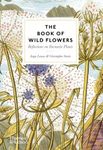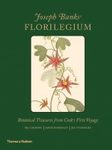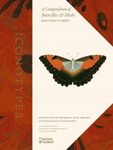Art / Photobook
By: Patrick Baty(Introduction By), Peter Davidson(Contributor), Elaine Charwat(Contributor), Giulia Simonini(Contributor), Andre Karliczek(Contributor)
290 pages, 1000 colour illustrations
![Nature's Palette Nature's Palette]()
Click to have a closer look
About this book
Contents
Customer reviews
Biography
Related titles
Recommended titles
About this book
This chromatic catalogue of the natural world pairs individual colour swatches with examples from the animal, vegetable and mineral kingdoms to create a beautiful and comprehensive colour reference system to grace every bookshelf.
Marking the 200th anniversary of the publication of Syme's expanded edition of Werner's Nomenclature of Colours (1821), this lavish volume takes Syme's field guide of 110 standard colours and – for the first time – fully illustrates it with nineteenth-century depictions of his referenced species. Expert text explains the uses and development of colour standards in relation to zoology, botany, mineralogy and anatomy, while specimens from contemporary collector's cabinets (birds, butterflies, eggs, flowers and minerals) are matched to each colour swatch. Syme's groundbreaking guide attempted to establish a universal colour reference system to help identify, classify and represent species from the natural world: this landmark publication completes his endeavour.
Contents
- Introduction The Origination, Purpose and Development of Werner’s Nomenclature of Colours by Patrick Baty
i. Whites, Greys and Blacks
1. Werner’s Mineralogical System and how his Nomenclature of Colours Became Syme’s Colour Standard by Peter Davidson
ii. Blues and Purples
2. Colours in Zoology: Subjective or Systematic? by Elaine Charwat
iii. Greens
3. Syme’s Colour Chart in Botany: Origin and Impact by Giulia Simonini
iv. Yellows and Oranges
4. One for All? Werner’s Nomenclature of Colours as a General Standard of Colour and its Particular Use in Medicine by André Karliczek
v. Reds and Browns
Customer Reviews
Biography
Patrick Baty is the author of The Anatomy of Colour and owner of Papers and Paints, a specialist paint business in London. His great grandfather, the artist Robert Bevan, was described by a former director of the National Gallery as being ‘perhaps the first Englishman to use pure colour in the 20th century’. He runs a consultancy that advises on the use of paint and colours in historic buildings and has worked with Dulux and Little Greene to develop ranges of traditional paint colours for English Heritage. He also lectures frequently on the subject of paint and colour of the 18th and 19th centuries.




























![Handbuch Integriertes Schädlingsmanagement in Museen, Archiven und Historischen Gebäuden [Handbook of Integrated Pest Management in Museums, Archives and Historic Houses]](http://mediacdn.nhbs.com/jackets/jackets_resizer_medium/26/265856.jpg?height=150&width=98)



















